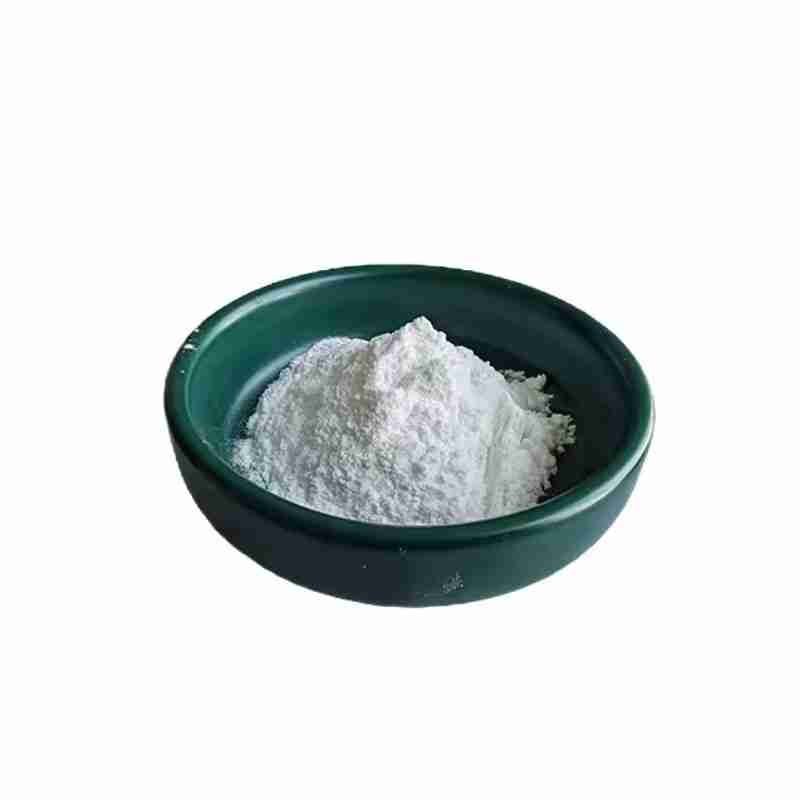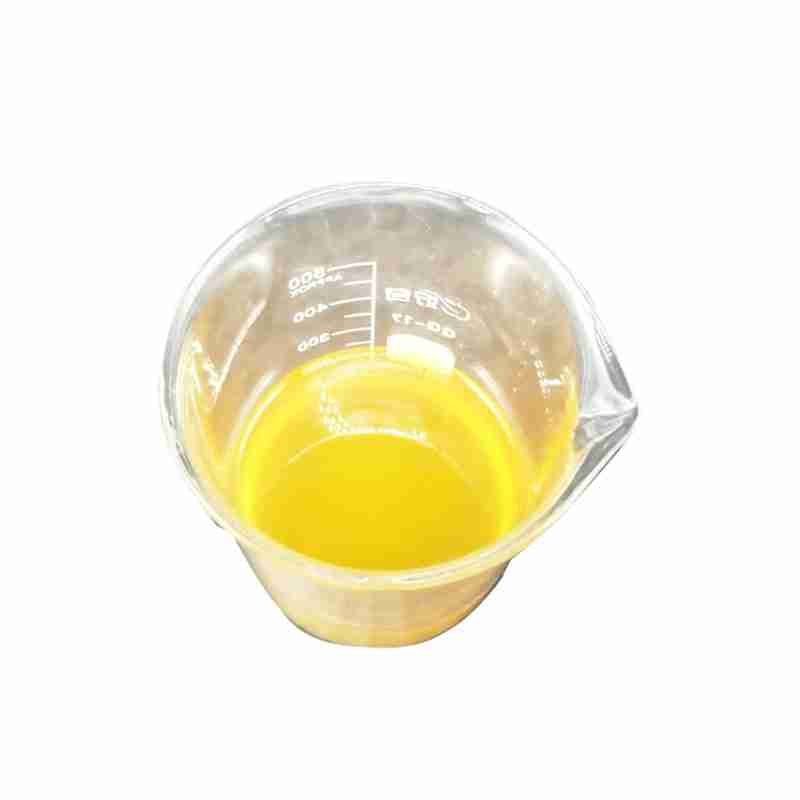1,8-Diazabicyclo[5.4.0]undec-7-ene CAS# 6674-22-2 DBU
1,8-Diazabicyclo [5.4.0] undec-7-ene is a bicyclamidine base. In natural chemistry, it is a non nucleophilic, sterically impeded tertiary amine base. It is reported that it is superior to amine drivers in Baylis Hillman response and can advertise the methylation response of phenol, indole as well as benzimidazole with dimethyl carbonate under mild conditions.
1,8-Diazabicyclo [5.4.0] undecanon-7-ene, referred to as DBU, is a type of amidine with a dual heterocyclic framework. It is an anemic or light yellow liquid at space temperature level, as well as can be dissolved in water, ethanol, acetone as well as other natural solvents. It is normally saved listed below 30 ??.
发送询盘
1,8-Diazabicyclo[5.4.0]undec-7-ene CAS# 6674-22-2 DBU
| DBU Basic information |
| Product Name: | DBU |
| Synonyms: | 1,8-DIAZABICYCLO[5.4.0]UNDEC-7-ENE;1,8-DIAZABICYCLO[5.4.0]UNDEC-7-ENE (1,5-5);1,8-DIAZEBICYCLO[5.4.0]UNDEC-7-ENE;1,8-Diazabicyclo[5.4.0]undecane-7-ene;1,8-Diazabicyclo(5 x 4 x 0)undec-7-ene;Pyrimido[1,2-a]azep;1,8-Diazabicyclo[5.4.]undec-7-ene;1,8-Diazabicyclo[5.4.0]undec-7-ene, 98% 100GR |
| CAS: | 6674-22-2 |
| MF: | C9H16N2 |
| MW: | 152.24 |
| EINECS: | 229-713-7 |
| Product Categories: | pharmacetical;Pyridines;Other Reagents;Biochemistry;Reagents for Oligosaccharide Synthesis;Biochemics;pharmaceutical raw material;Organic intermediates;OLED materials,pharm chemical,electronic;A clear, light yellow liquid of relatively low volatility. It has only a slight ammonia-like odor, is miscible with water and is soluble in most organic solvents.;bc0001 |
| Mol File: | 6674-22-2.mol |
 |
|
| DBU Chemical Properties |
| Melting point | -70 ??C |
| Boiling point | 80-83???C0.6?mm Hg(lit.) |
| density | 1.019?g/mL?at 20???C(lit.) |
| vapor pressure | 5.3 mm Hg ( 37.7 ??C) |
| refractive index | n20/D?1.523 |
| Fp | >230???F |
| storage temp. | Store below +30??C. |
| solubility | soluble |
| form | Liquid |
| pka | 13.28??0.20(Predicted) |
| color | Clear colorless to light yellow |
| Odor | Unpleasant |
| PH Range | 12.8 at 10 g/l at 20 ??C |
| PH | 12.8 (10g/l, H2O, 20??) |
| explosive limit | 1.1-6.5%(V) |
| Water Solubility | soluble |
| Sensitive | Air Sensitive |
| BRN | 508906 |
| Stability: | Stable. Incompatible with strong oxidizing agents, acids, acid chlorides, acid anhydrides. |
| InChIKey | GQHTUMJGOHRCHB-UHFFFAOYSA-N |
| CAS DataBase Reference | 6674-22-2(CAS DataBase Reference) |
| NIST Chemistry Reference | 1,8-diazabicyclo [5.4.0]undec-7-ene(6674-22-2) |
| EPA Substance Registry System | Pyrimido[1,2-a]azepine, 2,3,4,6,7,8,9,10-octahydro- (6674-22-2) |
- 2
- 2-diallylpent-4-en-1-amine
- 4
- 95-16-9
- Ammonium sulfamate
- Benzothiazole
- cas:67889-00-3ح2
- cas:83524-75-8 | pigment black 32
- cas:928836-00-4 | 2
- cas:932745-70-5 | 4
- Chemical Minerals
- Coconut diethanolamide
- Daily Chemicals
- discount
- for sale
- General pvc resin
- hexyl D-glucoside
- in stock
- Lauramidopropyl betaine
- LAURIC ACID MONOETHANOLAMIDE
- Petroleum Additives
- Plasticiser
- Ploymers
- price
- PVC
- quotation
- Raw Materal
- Remove term: Petroleum Additives Petroleum Additive
- SODIUM ETHYL 2-SULFOLAURATE
Related Products
Ethylhexyl Palmitate is a skin-conditioning ester, derived from ethylhexanol and palmitic acid, that imparts moisturization and a smooth texture to cosmetic and personal care formulations. It is valued for its emollient properties, enhancing the sensory experience of skin care products.
Benzothiazoles are a class of chemical compounds characterized by a fused benzene and thiazole ring. They exhibit a broad spectrum of applications, particularly as antioxidants in rubber and plastic industries, enhancing product longevity and performance. Additionally, benzothiazoles serve as key intermediates in the synthesis of pharmaceuticals, contributing to the development of life-saving drugs. Recognized for their stability and reactivity, these compounds are integral to advancing material science and healthcare solutions.
Chemical Name: Zinc citrate
Synonyms: Zinc citrate trihydrate
CAS No.: 546-46-3
Molecular Formula: C6H8O7Zn
Molecular Weight: 257.5
Appearance: White powder
POLY(VINYL CHLORIDE-CO-ISOBUTYL VINYL ETHER) is a copolymer that combines the properties of vinyl chloride and isobutyl vinyl ether. This polymer offers a balance of rigidity and flexibility, along with enhanced chemical resistance and durability. It is commonly used in the production of films, coatings, and adhesives due to its excellent barrier properties against gases and moisture, making it ideal for packaging and construction applications.
Chemical Name: Ammonium Iron(II) Sulfate
Synonyms: Diammonium iron bis(sulphate); iron (ii) ammonium sulfate
CAS No.: 10045-89-3
Molecular Formula: FeH5NO4S
Molecular Weight: 170.95
Silicones are a family of synthetic polymers known for their versatility and stability. They are heat-resistant, non-toxic, and have excellent electrical insulation properties. Commonly used in various industries such as construction, automotive, aerospace, and personal care products, silicones offer a wide range of applications from sealants and adhesives to lubricants and medical devices. Their resistance to extreme temperatures and weathering makes them a preferred choice for many high-performance applications.
Product name:Cyclopentane
Purity:96%
Appearance:White powder
Package:25kg/bag
Sample:Available
Polyhexamethylene guanidine hydrochloride, often abbreviated as PHMG-HCl, is a high molecular weight polymeric biguanide compound known for its potent antimicrobial properties. With a chemical structure that features a long chain of methylene groups bridged by guanidine units, PHMG-HCl is effective against a broad spectrum of microorganisms, including bacteria, viruses, and fungi.
This hydrochloride salt form of PHMG is highly soluble in water and is commonly used in various applications due to its non-irritant and non-toxic nature to human skin and mucous membranes. It is widely recognized for its ability to form a colorless and odorless solution, making it an ideal choice for use in personal care products, medical disinfectants, and water treatment processes.
The versatility of PHMG-HCl lies in its cationic nature, which allows it to bind to negatively charged microbial cell walls, disrupting their integrity and leading to cell death. This mechanism of action contributes to its effectiveness as a preservative and disinfectant. Moreover, its substantivity, or the ability to adhere to surfaces, enhances its long-lasting antimicrobial activity.
In summary, Polyhexamethylene guanidine hydrochloride is a reliable and efficient antimicrobial agent, pivotal in industries where hygiene and cleanliness are paramount, offering a safe and sustainable solution for microbial control.
Octocrylene is an organic compound widely recognized for its potent UV-filtering properties, making it an essential ingredient in sunscreens and other skincare products designed to protect the skin from harmful ultraviolet radiation. With the chemical name 2-(4-Methylbenzyl)-2H-benzotriazole-5-methyl, octocrylene is a stable and photostable molecule that provides broad-spectrum protection against both UVA and UVB rays.
This oil-soluble chemical is valued for its ability to absorb UV radiation effectively, converting it into heat without causing skin irritation or staining clothes. Octocrylene is often used in combination with other UV filters to enhance the sun protection factor (SPF) of formulations, ensuring a balanced and comprehensive defense against sun damage.
As a lipophilic compound, octocrylene is compatible with various cosmetic and dermatological formulations, contributing to the development of lightweight, non-greasy sunscreens. Its chemical structure allows for a high degree of safety and efficacy, making it suitable for a wide range of skin types, including sensitive skin.
In summary, octocrylene is a reliable and efficient UV filter, pivotal in the formulation of modern sunscreens that offer advanced protection against the sun’s harmful effects while maintaining skin comfort and product aesthetics.
N,N-Dimethylaniline is an organic compound with amine and methyl groups attached to a benzene ring. It is a colorless liquid with a characteristic amine odor. This compound is primarily used as a chemical intermediate in the synthesis of dyes, pigments, and polymers. Its reactivity makes it a valuable building block in the production of various organic compounds, particularly in the pharmaceutical and chemical industries.
Chemical Name: Ashwagandha Extract
Synonyms: Withania somnifera, ext.; Withania Somnefera Extract
CAS: 90147-43-6
Appearance: Brown
Chemical Name: 1,1,2,2-Tetrachloroethane
Other Name: Tetrachlorethane
CAS No.: 79-34-5
Molecular Formula: C2H2Cl4
Molecular Weight: 167.85
Appearance: Liquid


















